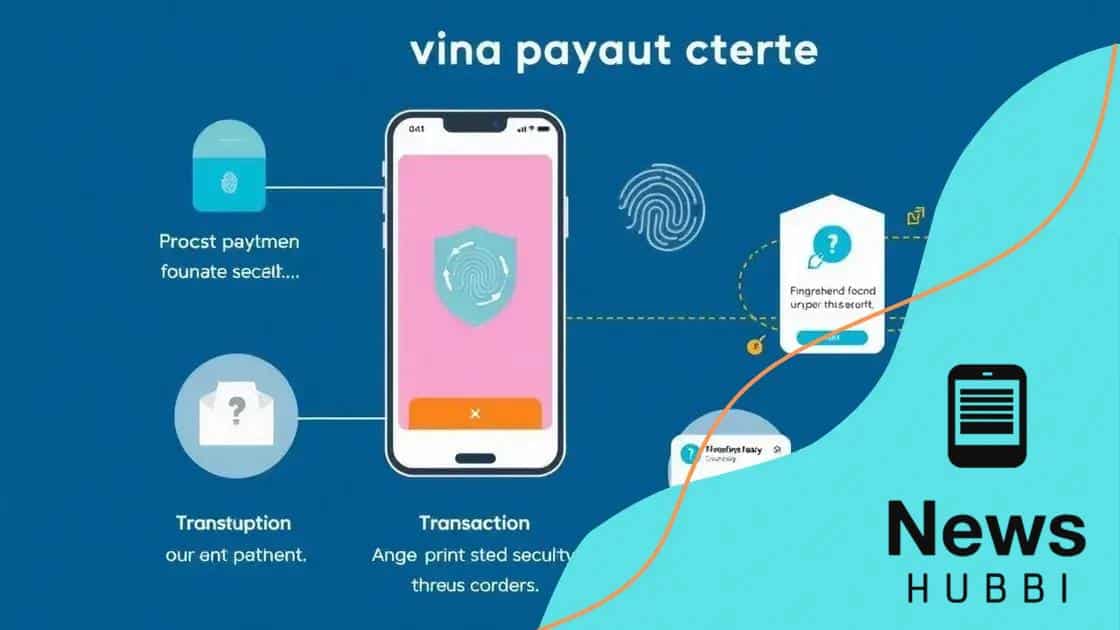How to use mobile payment platforms safely in 2025

Anúncios
To use mobile payment platforms safely in 2025, enable two-factor authentication, use strong passwords, avoid public Wi-Fi, and monitor your transactions regularly for any unauthorized charges.
When it comes to making purchases, how to use mobile payment platforms safely in 2025 is a pressing question. As technology evolves, so does the landscape of digital transactions. Let’s dive into how you can safeguard your financial information.
Anúncios
Understanding mobile payment platforms
Mobile payment platforms are changing how we handle transactions on a daily basis. Understanding these platforms is essential for safe usage. They allow users to pay for goods and services through their smartphones, making shopping more convenient than ever.
There are several types of mobile payment platforms available today. Each platform provides unique features and benefits that can enhance your purchasing experience.
Types of Mobile Payment Platforms
Most mobile payment platforms can be categorized into a few distinct types:
Anúncios
- Wallet apps: Apps like Apple Pay and Google Pay let you store your card information securely.
- Payment processors: Services like PayPal and Venmo allow peer-to-peer transfers and online purchases.
- QR code payments: These let you scan a code to make payments quickly and easily at stores.
While these platforms provide tremendous convenience, it’s important to stay aware of potential risks. Security features are a fundamental aspect of any mobile payment solution, assuring users that their data is protected.
Key Security Features
Here are some key security features to look for when choosing a mobile payment platform:
- Encryption: This ensures that your payment information is scrambled during transactions.
- Two-factor authentication: This adds an extra layer of protection by requiring two forms of identity verification.
- Transaction alerts: These notify you of any activity on your account, increasing your awareness.
By focusing on security and the right features, you can use mobile payment platforms confidently. Remember to regularly monitor your accounts and stay updated on best practices.
Key security features to look for

When using mobile payment platforms, it’s essential to understand the key security features that protect your transactions. These features help ensure that your personal information is safe while you make payments.
First, look for platforms that utilize encryption. This technology scrambles your payment information during transmission, making it unreadable to anyone who may intercept it. Knowing that your data is secure gives you greater confidence when shopping.
Two-Factor Authentication
Another important feature is two-factor authentication. This requires you to verify your identity in more than one way. For instance, you might need to enter a password and then confirm your identity with a text message code. This additional step helps protect your account from unauthorized access.
Transaction Alerts
Transaction alerts are also crucial for maintaining security. When enabled, these alerts notify you of any activity associated with your account. If you receive an alert for a transaction you didn’t make, you can act quickly to secure your account.
Some platforms offer a feature called biometric authentication, which uses your fingerprint or facial recognition for added security. This method is both convenient and highly secure, preventing others from accessing your payment details.
Regularly reviewing your payment history and staying informed about the security features of your chosen platform strengthens your overall safety while using mobile payment solutions.
Common risks and how to mitigate them
Using mobile payment platforms provides great convenience but also comes with potential risks. Understanding these common risks is essential to protect yourself while making transactions.
One of the biggest concerns is the threat of data theft. Hackers often target mobile payment systems to steal personal information. To reduce this risk, it’s crucial to use strong, unique passwords and to enable two-factor authentication on all payment apps.
Phishing Scams
Phishing scams are another prevalent risk. Scammers may send fake emails or messages that look like they come from legitimate services, tricking users into providing sensitive information. Always verify that you are interacting with a genuine source before clicking on links or submitting any information.
Device Security
Your device’s security is vital to safe online payments. Keeping your phone’s operating system and apps updated can help defend against vulnerabilities. Additionally, installing reputable security software can offer an extra layer of protection against malicious software.
- Use strong passwords: Create complex passwords that are hard to guess.
- Be cautious with public Wi-Fi: Avoid making payments while on unsecured networks.
- Regularly monitor your accounts: Check your transaction history for any unauthorized charges.
By being aware of these risks and actively implementing the recommended strategies, you can significantly enhance your mobile payment security. Keeping informed helps ensure that your transactions remain safe and efficient.
Best practices for safe transactions

To ensure your transactions are secure, it’s essential to follow some best practices for safe transactions when using mobile payment platforms. These practices help protect your personal information while allowing you to enjoy the convenience of digital payments.
One key practice is to always use a secure internet connection. Avoid using public Wi-Fi for financial transactions, as these networks can be unsafe. Instead, connect through a private network or use your mobile data when making important payments.
Enable Security Features
Another significant step is enabling all security features available on your payment app. This includes two-factor authentication, which adds an extra layer of protection by requiring both your password and a verification code.
Keep Software Updated
Keeping your device and apps updated is also vital for secure mobile transactions. Software updates often include security patches that protect your device from vulnerabilities. Make sure your device’s operating system and the apps you use are always up-to-date.
- Regularly monitor your accounts: Checking your transaction history can help you spot unauthorized charges quickly.
- Use strong and unique passwords: Avoid using the same password across multiple accounts and choose passwords that are hard to guess.
- Be cautious about sharing information: Never share your payment details or passwords over email or text.
By implementing these practices, you greatly reduce the chances of falling victim to fraud. Adopting a proactive approach to your mobile payment security will help you enjoy the benefits of digital transactions safely.
Future trends in mobile payment security
The landscape of mobile payment security is constantly evolving, shaped by emerging technologies and consumer needs. Understanding the future trends in mobile payment security can help users stay ahead of potential threats and ensure their transactions remain safe.
One significant trend is the increased adoption of biometric authentication. Features like fingerprint scanning and facial recognition enhance security by allowing only authorized users to access payment apps. This technology not only improves convenience but also reduces the risk of unauthorized access.
Blockchain Technology
Another trend gaining traction is the use of blockchain technology in mobile payments. Blockchain provides a decentralized ledger that enhances transparency and security. This can help prevent fraud and reduce the chances of data manipulation during transactions.
Artificial Intelligence (AI)
Artificial Intelligence (AI) is set to play a crucial role in the future of mobile payment security. AI algorithms can analyze transaction patterns and behaviors to detect fraudulent activities in real-time. This proactive approach can help safeguard users’ financial information more effectively.
- Enhanced encryption methods: As threats become more sophisticated, stronger encryption techniques will be developed to protect user data.
- Regulatory changes: Governments may impose stricter regulations on mobile payment security to better protect consumers.
- Increased user education: As users learn more about potential threats, they will demand better security features from mobile payment providers.
By staying informed about these trends and adopting the latest security technologies, users can protect themselves while enjoying the convenience of mobile payments. Moving forward, the focus will be on creating a safer digital payment environment.
FAQ – Frequently Asked Questions about Mobile Payment Security
What is two-factor authentication?
Two-factor authentication is an extra security step that requires two forms of verification before granting access to your account.
How can I protect my financial information while using mobile payments?
You can protect your information by using strong passwords, enabling security features, and avoiding public Wi-Fi for transactions.
What are the risks of using mobile payment platforms?
Some risks include data theft, phishing scams, and unauthorized transactions, but implementing security measures can help mitigate these.
Why is it important to monitor my transactions?
Regularly checking your transactions helps you detect any unauthorized charges quickly, allowing you to take prompt action.





